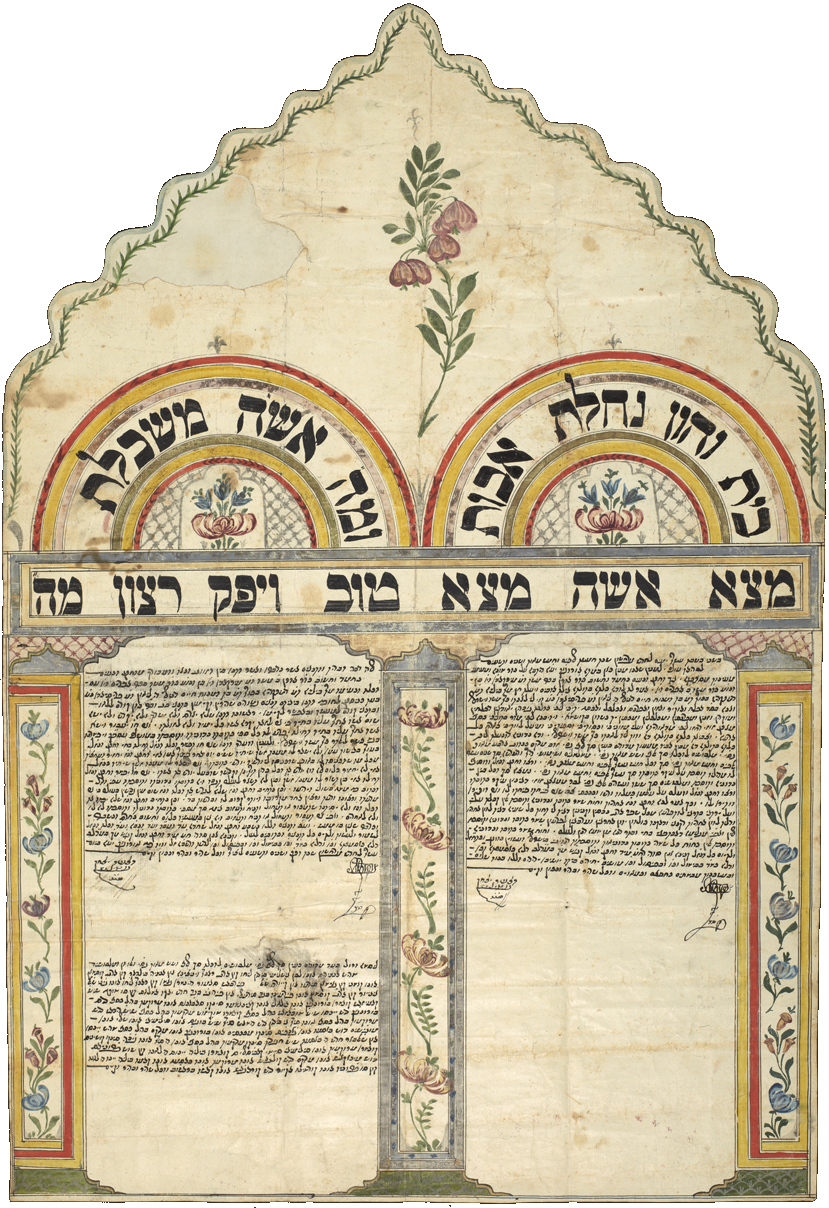This ketubah, or marriage contract, comes from Rusçuk, a port city on the Danube in the Ottoman Balkans. Dating from 1831, the ketubah was drawn up only a few decades after the Sephardi community of Rusçuk, now Ruse in Bulgaria, was established. The ketubah records the marriage of Aron, son of Moshe Merkado, and Bilia (Behorah), daughter of Haim Daniel de Leon Parisiado. The two arches, which bear both Islamic and Italianate motifs, contain standard ketubah language as well as the specifics of the bride’s dowry. At the bottom left we find an itemized trousseau in Judeo-Spanish detailing the numerous garments, textiles, and household items Bilia was to bring to her new home.
As one of only two known ketubbot from Rusçuk, the source sheds light on the growth of the Sephardi community in the city and its position at a crossroads between East and West. No less significant are the implications the document has for our understanding of marriage in the eastern Sephardi diaspora and the expectations and transactions that undergirded it before the profound political, cultural, and social transformations of the late nineteenth century.
